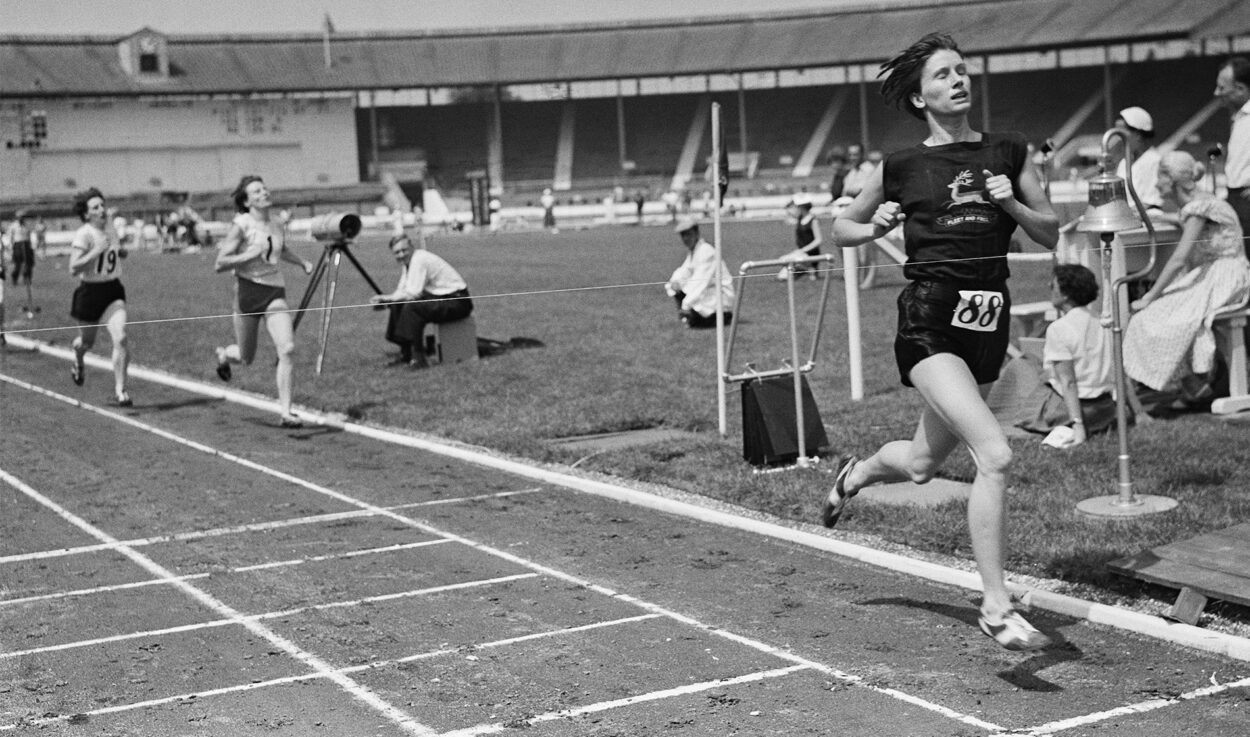As Faith Kipyegon aims to run a sub-four-minute mile in Paris next month, learn how Diane Leather broke the five minute barrier on this day in 1954
This is a feature from our May 1 sub-four special issue of AW in 2014
Just 23 days after Roger Bannister’s history-making sub-four-minute mile, a woman made a similar breakthrough. However, whereas Bannister’s achievement is the most celebrated in athletics history, the name of the first woman under five minutes is barely known to any who are not avid fans of the sport.
Diane Leather clocked 4:59.6 on May 29 at the Midland Championships in Birmingham, but given the status of women’s athletics at the time it is perhaps little surprise she is not a bigger name. It was not until 1967 that the IAAF first recognised women’s world records for the mile and it was only after that that women ran the distance at internationallevel.
She is arguably receiving more attention for her achievements now then she ever did while an athlete. In February she was invited along with Bannister and wheelchair racer David Weir to the Paddington Recreation Ground to help launch the Bupa Westminster Miles.
Now as Mrs Charles, she appears not the sort of person who would have appreciated the attention anyway and says she didn’t think it odd that it didn’t come. “I wasn’t surprised,” she said at Paddington Rec. “It’s just the way it was. I think I got attention but not as much as [the four-minute mile].”
She did all her talking on the track during a remarkable career. Born in 1933, she sprang to prominence in 1953 when winning the National cross-country – a title she was to hold until 1956. That year she set her first world best, revising the mile mark from 5:08.0 to 5:02.6 at the White City Stadium.
Losing the record to Romania’s Edith Treybal, she returned the following year to clock 5:00.2 in Birmingham. Just three days later Perry Barr Stadium was the scene for her historic feat, but she was clearly capable of much faster given her slightly erratic splits of 68.8, 2:27.00 and 3:48.6.
The following year in London she revised it to 4:50.8, while at the end of the season her fifth world mile best was 4:45.0. This remained in place until 1962.

Showing great range, albeit at a time when women’s athletics was nowhere near as competitive as today, she clocked a world best of 56.6 for 440 yards in 1954. Her only IAAF-recognised world records were the 2:09.0 for 880 yards in London in 1954, while she also set two 1500m world bests further to those en route to miles.
However, championship success was harder to come by. She took a silver apiece in the 800m in the 1954 and 1958 Europeans, losing out by just three tenths of a second in the latter.
She went to the 1960 Olympics but failed to progress from her heat. “I think I was past my best when I went to Rome for the 1960 Olympics,” she recalled. “But it’s not really a great regret.” She has seen times tumble in the mile to the 4:12.56 set by Svetlana Masterkova in 1996, but she says she is not surprised by how quick the athletes are running today.
“It’s totally professional now and all their time is focused on that,” she said. Born in a different era, Leather may or may not have found great fame for her athletics, but she is not one to bemoan the lack of attention women’s sporting achievements gained in her day. “I loved it,” she said of her competition years. “But it was different. We were all amateurs. There was no money involved until a decade or so later.”
Lastly she is asked, how about a sub-four-minute mile by a woman one day? “I shouldn’t think so. I think that’s a long way off!” she said.










